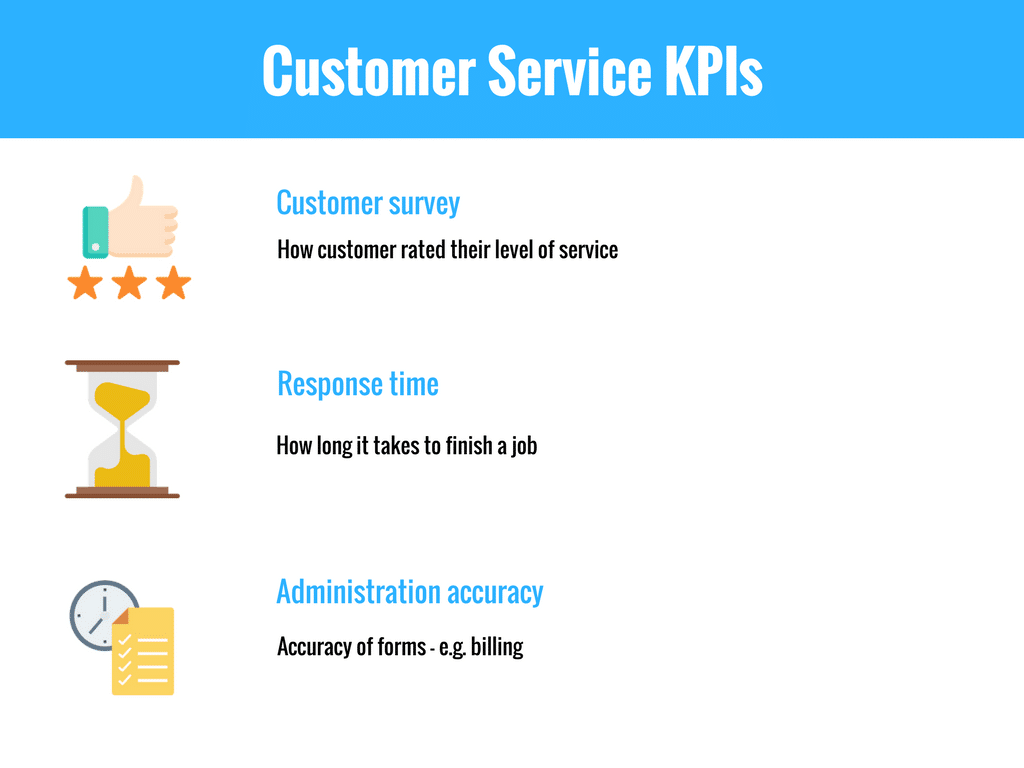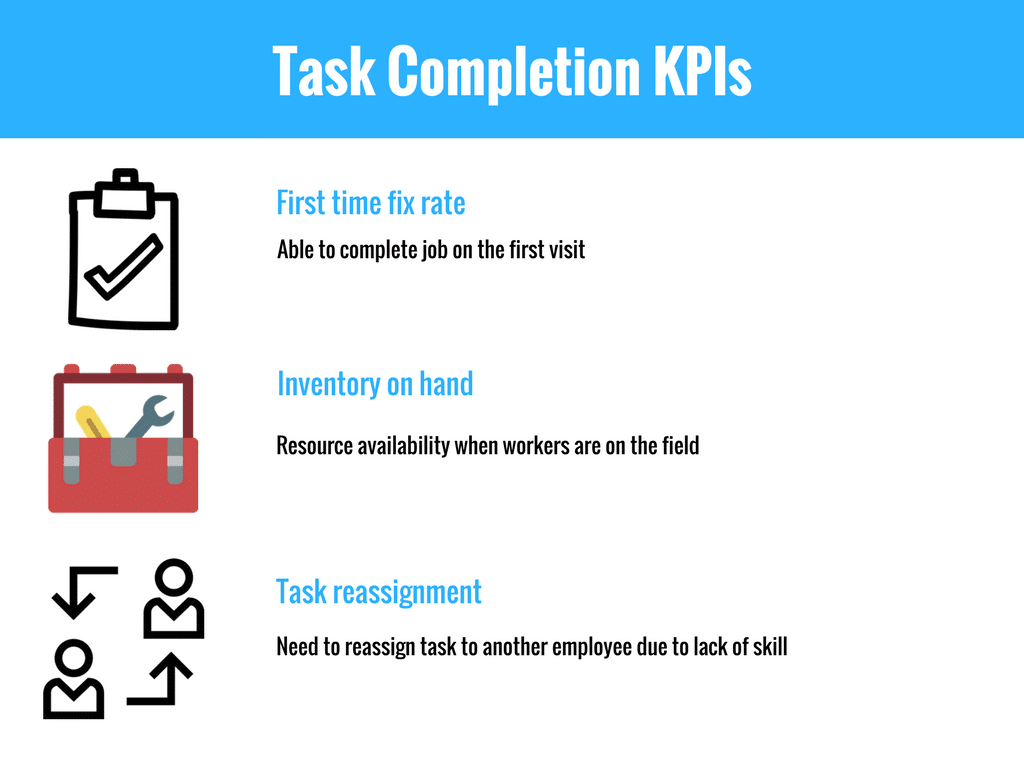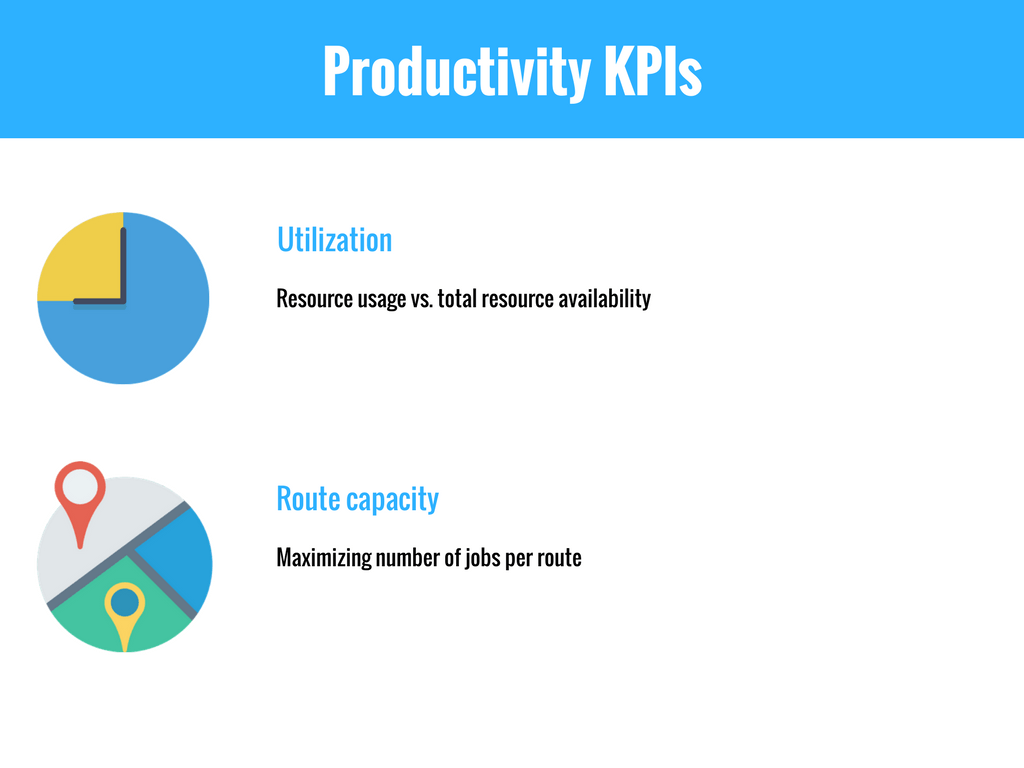
Here’s a quick story about field service management KPIs.
A VP meets with two field managers for their annual performance review.
Manager A walks into their meeting. “We’re doing well!”, they said. The VP then asked, “How do you know?”. The manager replied, “Well, I think most of our customers are happy. Oh, and also, my employees do a good job everyday.”
Manager B wants into their meeting. “We’re doing well!,” they said. The VP then asked, “And why do you think you are doing well?”. The manager replied, “Well, we’ve scored an average of 4-and-half-stars on our customer service surveys and we’ve completed the job on the first visit for over 90% of jobs. Oh, and we increased sales by over 20%.”

Who got the higher bonus that year? Manager B, of course! Because Manager B used field service management KPIs, they did a better job of presenting their results.
What are KPIs?
KPIs, or key performance indicators, guides businesses towards their goals. It’s a rather systematic approach.
Firstly, businesses identify their overall goals. Secondly, they think about how they can reach those goals and create smaller objectives called KPIs. Thirdly, KPIs are measured throughout the year. Finally, just like Manager B, managers can use field service management KPIs to prove that they are doing a good job!
Common Examples of Field Service Management KPIs
Customer service

Customer service drives businesses. Indeed, many businesses grow from happy customers and positive word of mouth referrals! Field service management, therefore, includes satisfying customers through quick and friendly service. Some important KPIs include:
Customer service survey scores. Many companies use customer surveys. Surveys let customers rate the service, typically on a scale from 1 to 5. Managers would then evaluate the surveys to see if they need to retrain any field crews.
Service response time. Service response is another important customer service metric. As a result, field managers measure how long it takes to complete a job.
Administration accuracy. Other than the actual job, customers care about accuracy. For instance, inaccurate bills could ruin the customer experience. Thus, managers often review forms to ensure they are accurate.
Task Completion

Related to customer service, task completion is a similar field management metric. This means getting the job done, especially on the first visit! Here are some task-related field service management KPIs:
First time fix rate. First time fix rate is a common industry metric – customers expect the job to be done the first time! As a benchmark, industry leaders usually have a rate of over 80%.
Inventory on hand. Lack of resources is one of the common reasons for why jobs are not finished on the first visit. Since it is frustrating and time consuming to schedule a second job, managers need strong inventory KPIs to evaluate their resource flow.
Task reassignment. Lack of skill is another reason why jobs are not be completed. Sometimes, employees might not know how to perform a job. In that case, a colleague takes over the job. Managers would then closely measure task reassignments to determine if they need to retrain a specific employee.
Productivity

Field service management KPIs also focuses on employee and resource productivity. Some common KPIs include:
Utilization. Utilization measures resource usage against total resource availability. For instance, if an employee is supposed to work for 8 hours a day, how many hours are they actually working?
Route capacity. Route capacity is similar to utilization. It focuses on maximizing the business work day by optimizing the routing schedule. In other words, managers measure how many jobs can be done in a single day and ensure each vehicle is assigned its optimal amount of jobs.


